Automotive battery chargers are essential for maintaining and recharging vehicle batteries. They come in various types and sizes to accommodate different vehicles and battery needs.
Whether you need a charger for a car, truck, motorcycle, or recreational vehicle, there are options available to suit your specific requirements. Additionally, modern battery chargers often come with advanced features such as automatic voltage detection and float mode monitoring to ensure safe and efficient charging.
When selecting a battery charger, it’s important to consider factors such as voltage compatibility, charging speed, and safety features. A reliable automotive battery charger can extend the lifespan of your vehicle’s battery and provide peace of mind knowing that you’re prepared for unexpected power issues.

Credit: www.amazon.com
Table of Contents
The Role Of Battery Chargers In Automotive Health
The Role of Battery Chargers in Automotive Health
Battery chargers play a crucial role in maintaining the health of automotive batteries. Proper maintenance can extend battery life and prevent unexpected breakdowns.
Maintaining Battery Longevity
Regular charging helps prolong battery life by preventing deep discharges.
- Keeps battery cells active and prevents sulfation.
- Preserves battery capacity for optimal performance.
Preventing Vehicle Breakdowns
Charging ensures the battery is always ready, reducing the risk of breakdowns.
- Regular charging prevents low voltage issues.
- Keeps the battery in top condition for starting the vehicle.

Credit: tomad.com
Types Of Automotive Battery Chargers
Automotive battery chargers are a lifesaver when it comes to keeping your car battery charged and ready to go. However, with so many types of battery chargers available in the market, it can be overwhelming to choose the right one for your needs. In this article, we’ll look at three types of automotive battery chargers: trickle chargers, jump starters, and smart chargers.
Trickle Chargers
Trickle chargers are the most basic type of automotive battery charger. They work by providing a low level of charge to your car battery over an extended period of time. This slow charging process helps maintain the battery’s charge level and prevent it from discharging completely. Trickle chargers are ideal for vehicles that are not used frequently, such as classic cars, boats, or motorcycles. They are affordable and easy to use, but they require a longer time to charge the battery compared to other chargers.
Jump Starters
Jump starters are portable devices that provide a quick boost of power to your car battery when it’s dead. They work by connecting the jump starter to your car’s battery and using its power to jump-start the engine. Jump starters are small, lightweight, and easy to carry around in your car’s trunk. They are ideal for emergency situations when you need to start your car quickly. However, jump starters are not designed to recharge your car battery fully, so you’ll need to use another type of charger to keep your battery charged.
Smart Chargers
Smart chargers are the most advanced type of automotive battery charger. They use microprocessors to monitor the battery’s condition and adjust the charging rate accordingly. This ensures that the battery is charged optimally and prevents overcharging or undercharging. Smart chargers are versatile and can be used to charge different types of batteries, including lead-acid, AGM, and gel batteries. They are also faster than trickle chargers and can charge your battery in a fraction of the time. However, smart chargers are more expensive than other types of chargers, and they require more attention to use correctly.
When choosing an automotive battery charger, consider your needs and budget. If you have a classic car or a boat that is not used frequently, a trickle charger might be the best option. If you’re looking for a portable device to jump-start your car in an emergency, a jump starter is the way to go. And if you want a charger that can keep your battery charged optimally and quickly, a smart charger is the best choice.
Selecting The Right Charger For Your Vehicle
When it comes to automotive battery chargers, choosing the right one for your vehicle is crucial for efficient charging. Here are some key factors to consider:
Compatibility With Vehicle Type
- Ensure the charger is compatible with your vehicle’s battery type.
- Check for specific features needed for cars, motorcycles, or other vehicles.
Understanding Charging Rates
- Determine the charging speed required for your battery.
- Look for adjustable charging rates to prevent overcharging.
Portability And Storage
- Consider the size and weight of the charger for portability.
- Compact designs are ideal for easy storage in your vehicle.
The Science Behind Battery Charging
When it comes to automotive battery chargers, understanding the science behind battery charging is crucial. From how chargers interact with batteries to the importance of voltage regulation, this knowledge can help users make informed decisions when it comes to maintaining their vehicle’s battery.
How Chargers Interact With Batteries
Automotive battery chargers utilize a process known as controlled rectifier charging to replenish the charge in a battery. This involves converting alternating current (AC) from a power source to direct current (DC) suitable for charging the battery. The charger’s circuitry regulates the current and voltage to ensure a safe and effective charging process.
The Importance Of Voltage Regulation
Voltage regulation is a critical aspect of battery charging as it ensures that the battery receives the appropriate voltage to prevent overcharging or undercharging. Proper voltage regulation helps extend the lifespan of the battery and ensures that it operates optimally when powering the vehicle’s electrical components.
Safety Precautions When Using Battery Chargers
When it comes to using automotive battery chargers, safety should always be a top priority. Improper handling of these chargers can result in accidents and injuries. It is essential to understand and follow the safety precautions to ensure a safe and efficient charging process.
Proper Handling Procedures
Proper handling of battery chargers is crucial to prevent accidents. Always ensure that the charger is compatible with the battery type and voltage. Inspect the charger for any visible damage before use. It is important to connect the charger to the battery following the manufacturer’s instructions. Avoid overcharging by monitoring the charging process and disconnecting the charger once the battery is fully charged.
Avoiding Common Hazards
There are several common hazards associated with battery chargers that can be avoided by following safety precautions. Keep the area well-ventilated to prevent the build-up of potentially explosive gases. Avoid exposing the charger to water or extreme temperatures. Use insulated tools when handling the charger to prevent electric shocks. Always follow the recommended charging rates to prevent damage to the battery.
Innovations In Battery Charging Technology
Discover the latest innovations in battery charging technology that are revolutionizing the automotive industry.
Wireless Charging Developments
New advancements enable wireless charging for automotive batteries, providing convenience and efficiency.
High-speed Charging Breakthroughs
Breakthroughs in high-speed charging technology reduce charging times significantly, enhancing user experience.
The Environmental Impact Of Battery Charging
As the world becomes more conscious of the environmental impact of everyday actions, it’s essential to consider the impact of automotive battery chargers. While battery chargers are necessary for keeping our cars running, they can also have a significant impact on the environment. In this post, we’ll explore the environmental impact of battery charging and the steps you can take to reduce your carbon footprint.
Energy Efficiency Considerations
One of the essential considerations when it comes to the environmental impact of battery charging is energy efficiency. Traditional battery chargers can be energy-intensive, which means they consume more power than necessary. This not only increases your energy bills but also contributes to carbon emissions. When purchasing an automotive battery charger, it’s important to look for energy-efficient models that can save you money and reduce your carbon footprint.
Recycling And Disposal Of Old Chargers
Another crucial aspect of the environmental impact of battery charging is the disposal of old chargers. Old battery chargers can contain hazardous materials that can harm the environment if not disposed of properly. It’s essential to recycle your old battery chargers and dispose of them correctly. Many retailers offer recycling programs for old battery chargers, making it easy for you to dispose of them safely.
When it comes to automotive battery chargers, it’s essential to consider the environmental impact and take steps to reduce your carbon footprint. By choosing energy-efficient models and properly disposing of old chargers, you can do your part to help protect the environment and reduce your carbon footprint.
Do-it-yourself Vs. Professional Charging Services
Choosing between DIY and professional services for your automotive battery charging needs is crucial. Let’s explore the factors to consider when making this decision.
Weighing Cost Against Convenience
- DIY Charging: Cost-effective but time-consuming.
- Professional Services: Convenient but may come at a higher cost.
When To Seek Professional Help
- Complex Issues: For technical problems beyond DIY solutions.
- Limited Time: When you need a quick and efficient solution.
Troubleshooting Common Charger Issues
When it comes to automotive battery chargers, encountering issues is not uncommon. Troubleshooting common charger issues is essential to ensure the smooth functioning of your charger and the safety of your vehicle. In this guide, we will discuss how to identify signs of charger failure and basic troubleshooting steps to address common issues.
Identifying The Signs Of Charger Failure
Charger failure can manifest through various signs, indicating potential issues that need attention. Some of the common signs to look out for include:
- Failure to power on: If the charger does not power on when plugged in, it could indicate an internal issue.
- Overheating: Excessive heat during operation may signal a malfunction.
- Inconsistent charging: Fluctuations in the charging process or unexpected interruptions could point to a problem.
Basic Troubleshooting Steps
Before seeking professional assistance, you can perform some basic troubleshooting steps to address common charger issues. These steps include:
- Check power source: Ensure that the charger is properly connected to a functioning power outlet.
- Inspect cables and connections: Look for any signs of damage or loose connections that may impede the charging process.
- Clean the charger: Dust and debris can affect the charger’s performance, so regular cleaning is important.
- Test with another battery: Using a different battery can help determine if the issue lies with the charger or the original battery.

Credit: www.mscdirect.com
Future Trends In Automotive Battery Charging
Integration With Renewable Energy Sources
Incorporating solar and wind power for charging.
Smart Charging And The Internet Of Things
Automated charging based on energy demand.
Frequently Asked Questions
What Is The Best Automotive Battery Charger?
The best automotive battery charger is the NOCO Genius G3500. It’s powerful, versatile, and easy to use, with advanced safety features.
How Do I Know Which Car Battery Charger To Buy?
Consider the voltage and amperage your car needs. Look for a charger with safety features and a warranty. Choose a reputable brand with good reviews. If you’re unsure, consult a professional for guidance.
What Battery Charger Will Charge A Completely Dead Battery?
A smart charger with a desulfation mode can revive a completely dead battery efficiently.
Can You Leave A Trickle Charger On All The Time?
Yes, you can leave a trickle charger on all the time to maintain the battery. It’s designed to keep the battery charged without overcharging. Just make sure to use a smart charger to prevent any potential issues.
Conclusion
Automotive battery chargers are essential for vehicle maintenance. They offer convenience and peace of mind. Regular use can prolong battery life and prevent unexpected breakdowns. Investing in a quality charger is a wise choice for every car owner. Stay prepared and keep your vehicle running smoothly.





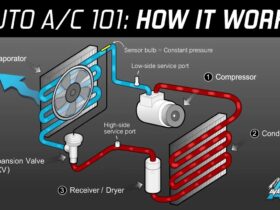

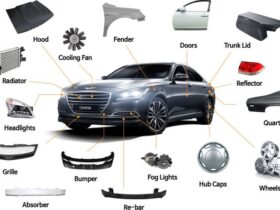
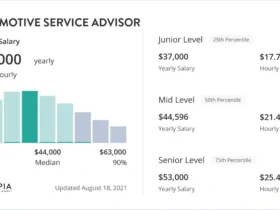


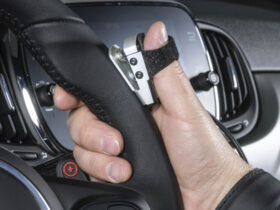





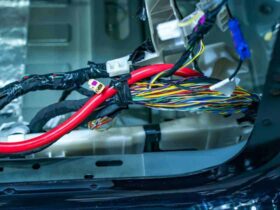

Leave a Reply